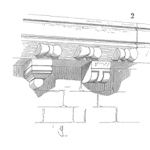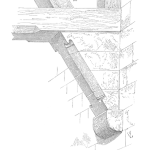
Since I published my first contribution about reliability, I’ve received a number of emails asking where the stress and strength distributions come from (Figure 1).
[Read more…]Your Reliability Engineering Professional Development Site
Find all articles across all article series listed in reverse chronological order.
by Enrico Belmonte Leave a Comment

Since I published my first contribution about reliability, I’ve received a number of emails asking where the stress and strength distributions come from (Figure 1).
[Read more…]
The mental model CATER will help you recall the five techniques that improve collaboration and team dynamics. CATER does two big things necessary for all greatly facilitated sessions. The mental model creates comparable knowledge among participants and opens feedback channels for successful collaboration.
CATER is a mental model that identifies the core components of a system and helps you wrap your head around how the components interact. [Read more…]
by Greg Hutchins Leave a Comment

This article is the tenth of fourteen parts to our risk management series. The series will be taking a look at the risk management guidelines under the ISO 31000 Standard to help you better understand them and how they relate to your own risk management activities. In doing so, we’ll be walking through the core aspects of the Standard and giving you practical guidance on how to implement it.
[Read more…]by Larry George Leave a Comment

AFRs are periodic ratios of failure counts divided by installed base. Have you seen meeting rooms wallpapered with AFR charts (Annualized Failure Rate)? Have you sat through debates about the wiggles in AFR charts? Fred Schenkelberg wondered if reliability could be estimated from AFRs and their input data? How about age-specific reliability and actuarial failure rate functions? Actuarial forecasts? MTBFs? Wonder no more!
[Read more…]by Mike Sondalini Leave a Comment

UNLIKE LEAN AND SIX SIGMA, THE PLANT WELLNESS WAY DIFFERENCE IS IT PREVENTS OPERATING RISKS FROM STARTING WITH A SYSTEM THAT IS BUSINESS-WIDE AND GOES END-TO-END OF THE WHOLE ASSET LIFE CYCLE
—
Lean and Six Sigma are point-in-time problem focused methodologies, where as PWW EAM System-of-Reliability uses the whole life cycle to build business and operational systems with processes that continually optimize productivity, minimize risk, and generate maximum operating profits.
[Read more…]by Hemant Urdhwareshe Leave a Comment

In this video, viewers can understand and appreciate benefits of making reliable products! Addresses ASQ CRE body of knowledge Clause I.A.1 Benefits of Reliability Engineering.
/moreby Sanjeev Saraf Leave a Comment

Pascagoula gas plant receives condensate from offshore Gulf of Mexico.
For separating components at cryogenic temperatures, it used brazed aluminum heat exchangers. These exchanger are susceptible to thermal fatigue due to low temperaures.
by Christopher Jackson Leave a Comment

What does it mean to be a ‘visionary leader’? It starts with being different to most people. You can’t just become a visionary leader by completing a leadership course, being mentored by someone awesome, or by compiling an impressive curriculum vitae (although these can help people with the potential to become visionary leaders get there).
One of the first things that the then United States Army Chief of Staff (General George C. Marshall) did at the outbreak of World War II was to fire the majority of his officers who had climbed the ladder of military ranks throughout the previous 20 years of relative peace.

Things get a little dirty when humans get involved. In any system, human involvement can sometimes cause delays or issues. Here are some effective communication and facilitation secrets for reliability engineers.
Communication is the exchange of information from one person to another.
Communication requires a sender, a receiver, and a message. Technical professionals (sender) usually believe the decision maker (receiver) cannot understand the message because the decision maker is not as smart as they are. Most of the time, the lack of understanding comes from the noise the sender generates. The burden of effective communication is on the send (technical professional), not the receiver (decision maker).
[Read more…]
Fear is that hidden factor present in every organization, preventing leadership from achieving the growth they desire. In the 2 previous articles, I brought up the types of employee fears and how that fear can negatively impact a given organization. Additionally, I brought up the importance of assessing these fears and understanding how they’re specifically affecting your organization. In this third and final article in this series, I’ll explore what leadership can do to mitigate these fears towards cultivating a culture of trust and empowerment.
[Read more…]by Hemant Urdhwareshe Leave a Comment

In this video, you will learn how to perform statistical calculations: mean and standard deviation on Casio fx991-MS Calculator.
[Read more…]by James Reyes-Picknell Leave a Comment

By Jesús R. Sifonte
Condition Monitoring is a broad term referring to the systematic process of data collection for the evaluation of asset’s performance, reliability and maintenance needs with the purpose of planning repair works. Its main purpose is Potential Failures finding. It requires the collection of good asset’s health data which trending is studied. The primary advantage of Condition Monitoring is that it incorporates health indicator monitoring activities performed while the machine is operating. Assets failures are predicted well in advance of their occurrence. It allows for planning repairs safely and economically for the plant. Also, machine parameter data trending allows extending assets operation as close as possible to their actual useful life. Condition Monitoring data provides vital information for taking important decisions affecting plant operation goals. Maintenance decisions are taken based on the actual asset condition avoiding unnecessary repairs leading to start up failures. Catastrophic failures of a critical assets presenting accelerated wear trends can be avoided by using C tasks too. Sometimes operating conditions changes causing components life expectance to reduce as noted by steeper indicators trends leading to unexpected catastrophic failures. This can be detected by CM and earlier planned shutdowns can avoid such disasters.
[Read more…]by Mike Sondalini Leave a Comment

Maintenance Planning and Scheduling can be learnt on the job, but to become a very good maintenance planner and maintenance scheduler you still need to know the reasons behind why you do things in certain ways when you plan and schedule maintenance work orders.
[Read more…]by Greg Hutchins Leave a Comment

Smaller organisations, especially those with less than 100 people, often struggle with putting in place the right-size effective risk management practices that do not take up too much of their time and resources.
What I have often seen and experienced is that small-size organisations implement the ‘standard’ risk management practices that are commonly found in larger organisations without much thought as to whether it is fit-for-purpose to enable better organisational performance given their unique context or operating environment.
[Read more…]by Joe Anderson Leave a Comment

In the industrial landscape, the humble lubricant might seem inconspicuous, but it plays a pivotal role in ensuring the smooth operation of machinery, reducing friction, and extending the life of critical assets. Achieving lubrication excellence isn’t just a matter of choosing the right oil; it’s about developing a comprehensive program that encompasses the best practices, advanced technologies, and a culture of precision. In this blog, we will explore the methods to build a world-class lubrication program that’s the cornerstone of operational success.
[Read more…]